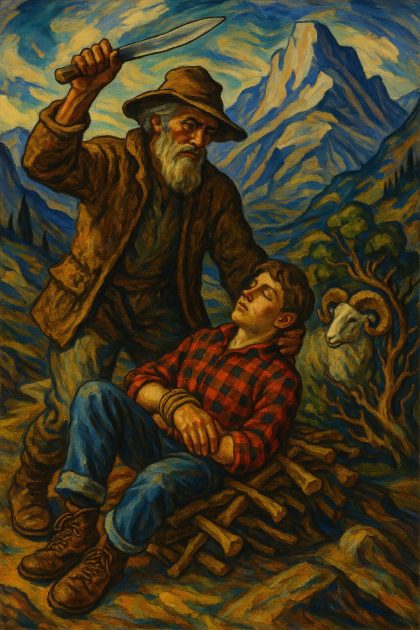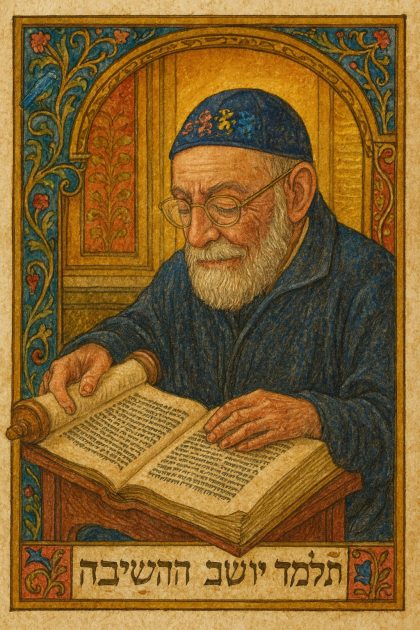Samain and the Summer’s End Moon
Friday gratefuls: Morning kisses from Shadow. Her vitality. Joanne. Tara. Alan. Sarah and Josh, their new restaurant. Newalins style. Dandelion. Deeper darkness. Orion, my Winter friend. Whom I have neglected. Pregnant Cows, Does, Black Bears, and Mountain Lions. Among many others. CBE. Its origin and its present. The Trail. The Ancientrail.
Sparks of Joy and Awe: Sheet Pan Meals
Life Kavannah: Wu Wei
Week Kavannah: Histapkot. Contentment. Acceptance. I’m comfortable with who I am and with what I have.
Tarot: Being a metaPhysician
One brief shining: Filled up my copper watering can, picked up a handful of dog treats, went outside into a Mountain late Fall day where the difference between sombre et sol could be fifteen degrees or more; I watered my brave Carrots, their delicate, frond-like Leaves swaying back and forth in a light morning Breeze, then turned to play with Shadow, following the Sunlight to stay warm while I put treats on the ground or asked her to sit, down, or touch. She smiled, tail wagging.
 Two Nordicware half sheet pans came yesterday, making my old docent colleague, Linda Jefferies, a few cents richer. Linda’s grandfather invented the bundt cake pan.
Two Nordicware half sheet pans came yesterday, making my old docent colleague, Linda Jefferies, a few cents richer. Linda’s grandfather invented the bundt cake pan.
Though once a cake baker myself at the Party Cake Bakery in Appleton, Wisconsin, I no longer delight in mixing huge bowls of cake batter and squeezing precisely one pound of it into cake pans sitting on a small scale.
These sheet pans are for my new cooking venture, sheet pan meals. First will be Cabbage and Butter Beans followed by a Shrimp broil. Gradually closing the book on Cook Unity. At least for a while. Either today or tomorrow.
Parashat Vayera for tomorrow morning’s bagel table. This important segment of Bereshit (Genesis) has the prophecy to Sarah, at which she laughs. The destruction of Sodom and Gomorrah. The exile of Hagar and Ishmael. And, the Akedah, the binding of Isaac.
Not sure which direction Luke will take the morning since it’s impossible to cover a whole parsha in one hour and a half session. Lots of wonderful mythic tales. Sarah, in her late nineties, is told her barrenness will come to an end. She laughs as Abraham did in the previous parsha at the same news. God as the first borscht belt comedian? I love that those sages who stitched together all these different stories included a couple that feature laughter. A pregnant near centenarian? What’s not to laugh at?
 But poor Isaac. Sarah’s only son. Whom God instructs Abraham to sacrifice. The Akedah. A test of Abraham’s faith? Therefore our faith in ourselves to handle even the most demanding expectations with which life presents us? I like this idea that each of us may have an Akedah which asks us to sacrifice what is most dear to us in the name of love.
But poor Isaac. Sarah’s only son. Whom God instructs Abraham to sacrifice. The Akedah. A test of Abraham’s faith? Therefore our faith in ourselves to handle even the most demanding expectations with which life presents us? I like this idea that each of us may have an Akedah which asks us to sacrifice what is most dear to us in the name of love.
The midrash. One says the Ram that appears in the bush as an alternative sacrifice for Isaac gives its two horns as the first shofars, one blown at the foot of Mt. Sinai when the wandering Jews receive the Torah and one blown for the coming of the messiah.
Another suggests Satan told Sarah who died of shock and grief.
Yet others see Isaac as older, some see him as old as 37, and a willing participant who tells Abraham to bind him tightly so he won’t struggle and invalidate the offering.
What kind of midrash could you offer?











